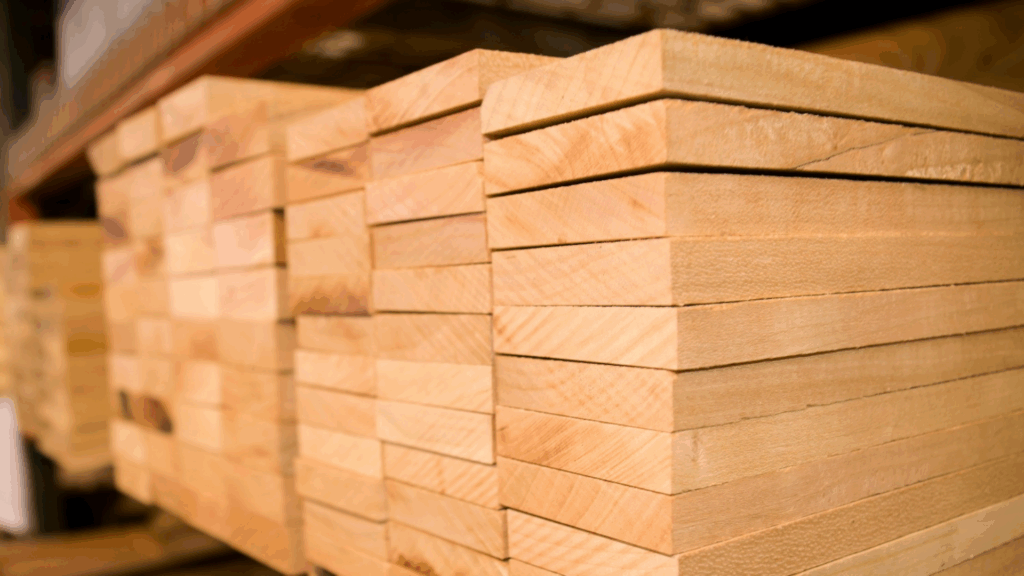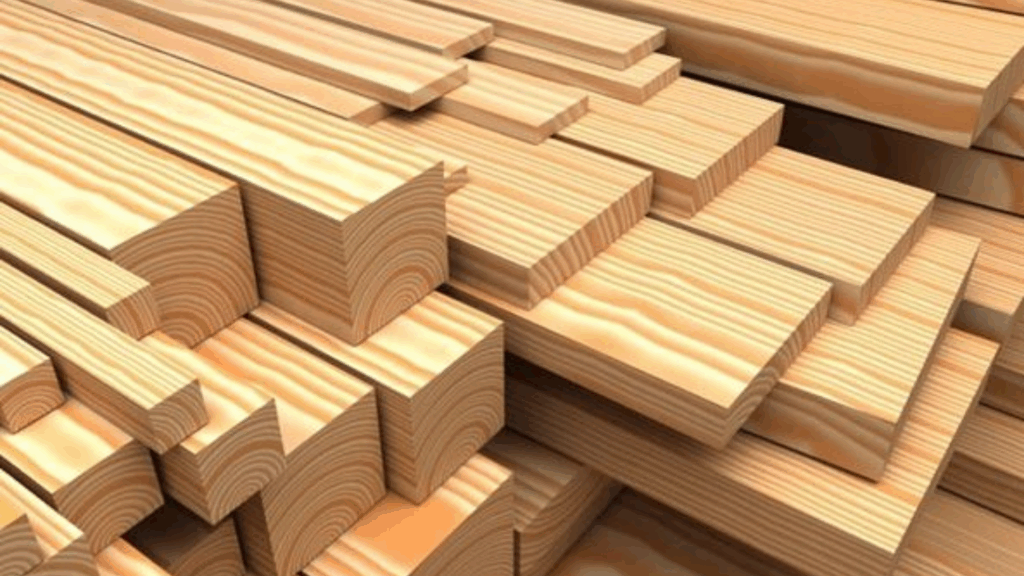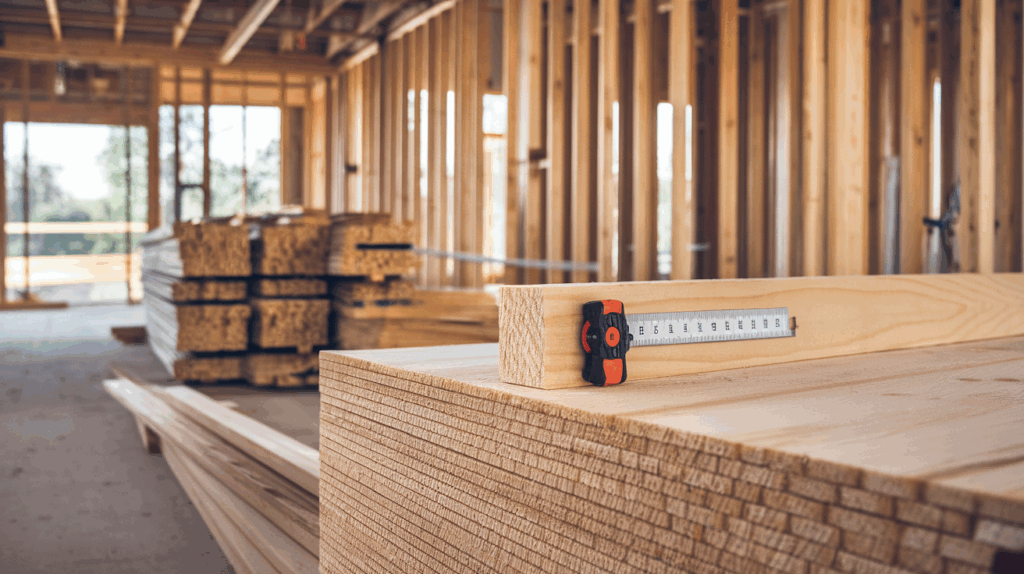Ever picked up a “2×4” and wondered why it didn’t actually measure 2 inches by 4 inches? I definitely did.
When I first started working on DIY projects, this small detail threw me off more than once. It was frustrating to find out something so basic wasn’t what it seemed.
I remember measuring it, thinking I had made a mistake – but no, the wood really was smaller.
Why does this happen? And what does it mean for your projects?
Once I understood the difference between the labeled size and the actual size, my cuts became more accurate, and things fit together better.
This guide is what I wish I had back then. If you’re building a wall, fixing a deck, or just curious, knowing these basics makes everything easier and a little less overwhelming.
Understanding Lumber Lengths

Lumber lengths are a key part of any building or DIY project. I always check both the nominal and actual dimensions so I know exactly what I’m working with.
You and I count on standard sizes to keep cuts simple and avoid wasting materials. In the U.S., most lumber is sold in even-foot lengths, like 6 ft, 8 ft, 10 ft, all the way to 20 or 24 ft.
This helps you match boards to framing plans, furniture builds, or any structure you have in mind.
These standard sizes make it easier to plan ahead and get consistent results.
Knowing what to expect from each board helps us stay on track, save money, and build smarter from the very first cut.
Standard Lengths for Dimensional Lumber

Dimensional lumber is typically sold in standard lengths such as 8, 10, 12, 14, 16, and 20 feet.
These sizes meet most building needs, like framing walls, spanning ceilings, or laying deck boards. Choosing the right length makes your work smoother and helps cut down on waste.
If I’m framing an 8-foot wall, I prefer using pre-cut 8-foot studs instead of trimming longer boards.
Consistency matters, especially in framing. If pieces don’t line up, you can end up with uneven walls or gaps.
I always double-check my plans before buying to avoid mistakes. These standard sizes exist to make building easier, faster, and more affordable.
Common Wall Construction Elements
| Component | Typical Size | Spacing | Use | Notes |
|---|---|---|---|---|
| Wall Height | 8 or 9 feet | — | Standard home wall height | 92 5/8″ studs fit 8’ ceilings with plates |
| Wall Studs | 2×4 or 2×6 | 16″ or 24″ on-center | Vertical framing support | Use dry, straight lumber to avoid warping |
| Floor Joists | 2×8, 2×10, or 2×12 | 16″ on-center | Supports floor loads above | Larger spans need deeper joists |
Nominal vs. Actual Dimensions: A Common Source of Mistakes
When buying lumber, the size on the label is the nominal size – not the actual measurement. This often leads to confusion and framing mistakes.
After milling and drying, the wood ends up smaller than the nominal size. Knowing the real size helps you cut accurately and avoid gaps or uneven surfaces.
The nominal size is the name of the lumber size before it’s planed smooth. For example, a 2×4 is the rough-cut size before finishing.
The actual size is the final measurement of the board after it’s been smoothed and dried. A 2×4 actually measures 1½” x 3½”.
Nominal Size to Actual Size Conversion Chart
- 1×4 → 0.75″ x 3.5″
- 2×4 → 1.5″ x 3.5″
- 2×6 → 1.5″ x 5.5″
- 2×8 → 1.5″ x 7.25″
- 2×10 → 1.5″ x 9.25″
- 2×12 → 1.5″ x 11.25″
Having this chart nearby can help reduce errors during cutting and building.
Special Dimensional Lengths: When Custom Sizes Make Sense
Sometimes your project needs more than just standard board lengths. That’s when custom-cut lumber can make a big difference.
- Fits unique builds: Great for stairs, short walls, tight corners, or built-ins.
- Saves material: Reduces trimming and leftover scraps on-site.
- Time-saving: Less measuring and cutting speeds up the job.
- Cleaner results: Pre-cut lumber often fits better and looks neater.
- Easy to order: Many local lumberyards offer custom-cut services—just ask before you buy.
Moisture Content & Lumber Grades: What to Look For
When I buy lumber, I always check its moisture level and grade. Green wood has high moisture and can shrink or warp, so I avoid it for indoor use.
Kiln-dried wood is more stable and ideal for walls or furniture.
For outdoor projects, I pick pressure-treated wood since it resists rot and insects, but I never use it indoors due to the chemicals.
Lumber grades also matter. Grade #2 works fine for framing, but for visible surfaces like shelves or trim, I choose higher grades like Select or #1.
They have fewer knots and look cleaner.
Picking the right grade and moisture type keeps your project stable and long-lasting, with fewer problems later. Always check labels or ask your supplier.
Buying & Handling Tips for Different Lumber Lengths
When selecting dimensional lumber, it’s important to inspect each board. Look down the length to check for warps, bows, or splits. Damaged boards can cause issues in both structure and appearance.
Here are some helpful tips:
- Pull boards from the middle of the pile; they’re often straighter.
- Check for moisture with your hand or a moisture meter.
- Store lumber flat and off the ground to keep it straight and dry.
Handling lumber with care prevents future problems during building. It also protects your budget by reducing waste.
Final Thoughts
Understanding dimensional lumber makes every project smoother.
At first, all the sizes, labels, and terms might seem overwhelming, but once you learn how nominal sizes differ from actual sizes and why standard lengths matter, things start to make sense.
I always double-check my measurements and match the lumber type to the job, indoors, outdoors, structural, or decorative. Choosing the right grade also helps avoid future issues.
The more you build, the better you get at reading labels, selecting boards, and cutting down waste.
That’s how good builds start, with a solid understanding of materials.
So take your time, learn the basics, and trust your growing skills. You’ve got this.

